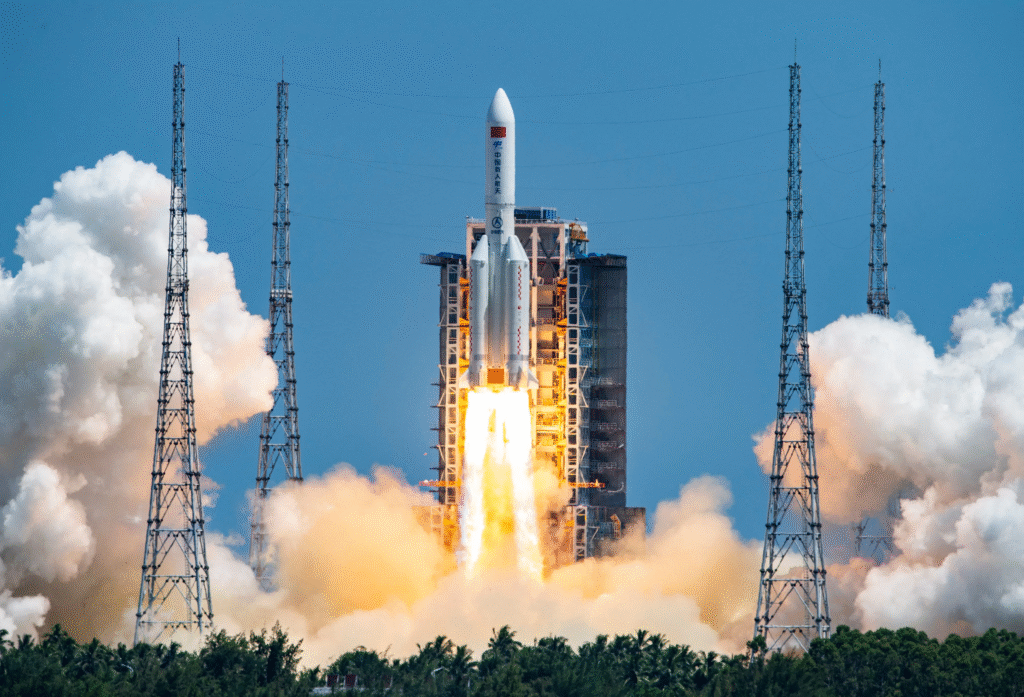
Tiangong Space Station enters 2025 with new modules and international astronauts. Discover China’s ambitious plans for orbital dominance this year.
Introduction
As China’s Tiangong space station enters its fourth operational year in 2025, it marks a new phase in Beijing’s space ambitions. With expanded modules, international crew rotations, and cutting-edge research projects, Tiangong is emerging as a viable alternative to the ISS. What does this mean for global space cooperation and competition? Here’s an exclusive look at Tiangong’s 2025 milestones.
Current Status of Tiangong
- 3 core modules operational (Tianhe, Wentian, Mengtian)
- 2 new labs added in 2024 (expandable to 6 total modules)
- Permanent crew: 6 taikonauts (up from initial 3)
- Orbit: 340-450 km altitude (similar to ISS)
Major 2025 Developments
International Collaboration
- First European astronaut (ESA’s Markus Wandt) arrived January 2025
- Pakistani crew member scheduled for Q3 2025 launch
- 17 nations approved for experiments (including Russia, Venezuela)
Scientific Breakthroughs
- Space medicine: Cancer cell experiments show 30% better results than Earth labs
- Material science: Created ultra-light alloys impossible to make under gravity
- Astronomy: Xuntian space telescope (launching 2026) testing underway
Technical Upgrades

- New solar arrays boost power generation by 40%
- Robotic arm now capable of satellite repairs
- Docking system compatible with multiple spacecraft types
Comparison with ISS
| Feature | Tiangong (2025) | ISS |
|---|---|---|
| Weight | 100 metric tons | 420 tons |
| Crew | 6 | 7 |
| Remaining Life | 10+ years | Retirement 2030 |
| Cost | $8B (estimated) | $150B+ |
Geopolitical Implications
- US concerns: NASA banned cooperation under Wolf Amendment
- Global South appeal: Offers affordable access to emerging space nations
- Military potential: Pentagon tracks dual-use technology risks
India’s Stance
- ISRO maintains distance but monitors developments
- Private Indian firms exploring payload opportunities
- Strategic analysts warn of “space station diplomacy”
Future Plans
- 2026: Add 2 more modules (total mass 180 tons)
- 2027: Possible space tourism flights ($60M per seat)
- 2030s: Potential Mars mission staging platform
Challenges Ahead
- Debris risk: 12 close calls tracked in 2024
- Crew safety: 2024 minor oxygen leak incident
- Sustainability: Recycling systems need improvement
Expert Views
- “Tiangong proves China can lead in space without Western help” – SpaceNews
- “The real test is maintaining it long-term” – Harvard-Smithsonian Center
Conclusion

As Tiangong evolves in 2025, it represents both China’s technological prowess and the changing dynamics of space exploration. While not yet matching ISS’s scale, its strategic partnerships and focused research could redefine humanity’s orbital future. The coming years will show whether it becomes a collaborative platform or another arena for superpower rivalry.
No responses yet